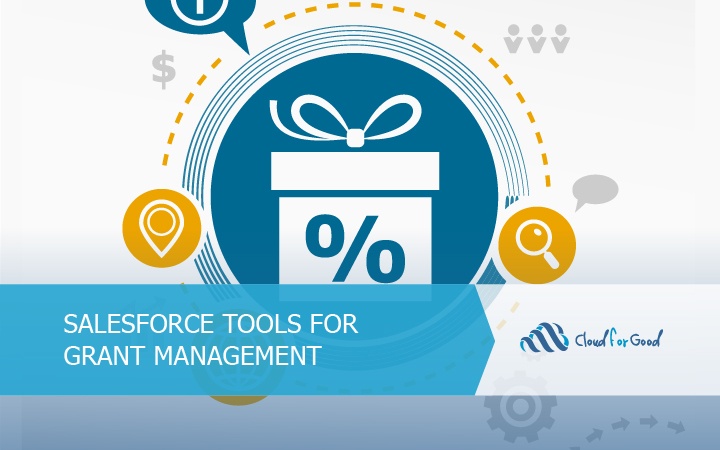As you may know, each team member at Cloud for Good has nonprofit experience. Some have worked for a nonprofit, some have served on a Board of Directors, and many have volunteered. Regardless of the type of experience, our staff knows that oftentimes a nonprofit employee wears many hats and needs to do more with fewer resources. Grants are a traditional means to support your nonprofit and we hope to make that process a bit easier with this post.
With over 20 years in the nonprofit sector, I have written my share of grants. It was never my favorite task, but a necessary one none the less. What I could have used back then is what we’ll talk about today – grant management using Salesforce and the Nonprofit Success Pack (NPSP).
Where to start? Despite what Maria von Trapp sang, let’s start in the middle. Imagine that you already have been awarded a grant. For demonstration purposes, we’ll say your grant funds a program that provides free spay and neutering to rescued dogs and cats. Here are some things you can do right now:
- Track reports that need to be completed, their due date, and set a reminder to keep you on schedule;
- Log the grant’s start and end dates;
- Note the amount you requested vs. what you were awarded;
- Upload the grant award documentation;
- Keep track of who you should contact for questions about reports or payments;
- Log the grant outcomes – ex. we provided service for 67 cats and 45 dogs
These are just the basics for commonly used post-award features. Let’s step back and look at the grant management cycle from the beginning.
From A – Z
You’ve been tasked with finding money to support a program that sends kids from low-income families to summer camp. The beauty of using Salesforce’s NPSP to manage this effort is that you can track everything from grant research to application status to how many kids were sent to camp because of this grant. This is helpful functionality and information your nonprofit needs to track.
Do Your Prospect Research
Let’s start with the grant makers who are already in your system. Salesforce provides a way to “tag” an organization’s record as a grant maker, including the funding focus areas. Who focuses on children, outdoor education, or low-income community support? You can quickly identify those records and start digging deeper into who may be a good prospect.
You may have access to grant research tools (ex. Foundation Directory Online, FoundationSearch, etc.) and need a way to organize your vetting process. Salesforce Leads could be beneficial in this scenario. Input the basic info about several grant makers and contacts for whom you want to research further. When they fit your mission, convert them into a record. It’s easy to automatically create an Opportunity record (the grant) for tracking purposes after you convert the Lead. For those who are not a good fit, you can close them as a Lead, so you do not have to start over every time.
Build Your Grant Pipeline
You now have targets and know where you will submit a grant application. You can track every step of that process using an Opportunity in Salesforce. Are you still researching, sending a Letter of Intent, waiting to hear if your grant was awarded? The ‘Stage’ field is powerful. It tracks each stage and assigns a probability for the likelihood of an award. Those stages and percentages of probability can be customized to meet the needs of your organization.
For example, during the research stage, the likelihood of receiving the grant is still rather low – say 10%. However, if you’ve already submitted your Letter of Intent and received word that you qualify to submit a grant, the likelihood has now increased to roughly 50%. The further you get in the process, the likelihood of success continues to climb.
If you want to impress management, you can even build automations into this process. For example, when this opportunity moves into the ‘Application Submitted’ stage, you can have Salesforce automatically send an email notification to your Director of Development and/or your Executive Director.
Now fast forward to when you’re using Salesforce to manage all your grants. You can create reports and view forecasts for what money is likely to come in and when. You can now easily view your grant pipeline.
Imagine being able to report out quickly to your manager the following:
- We applied for this many grants this month, totaling X dollars
- This quarter, we were awarded X dollars in grants, out of X dollars for which we applied
- To support this program, we are awaiting a decision on X number of grants
- And perhaps most importantly – this is the impact our programs had because of all the hard work we did writing all of these grants
For anyone who has ever written a grant, you know how time consuming it can be. Salesforce provides a way to keep you on track, has built in time savers, and helps you know exactly where you are in the process. Happy grant writing (and tracking)!
You may also be interested in these posts:





